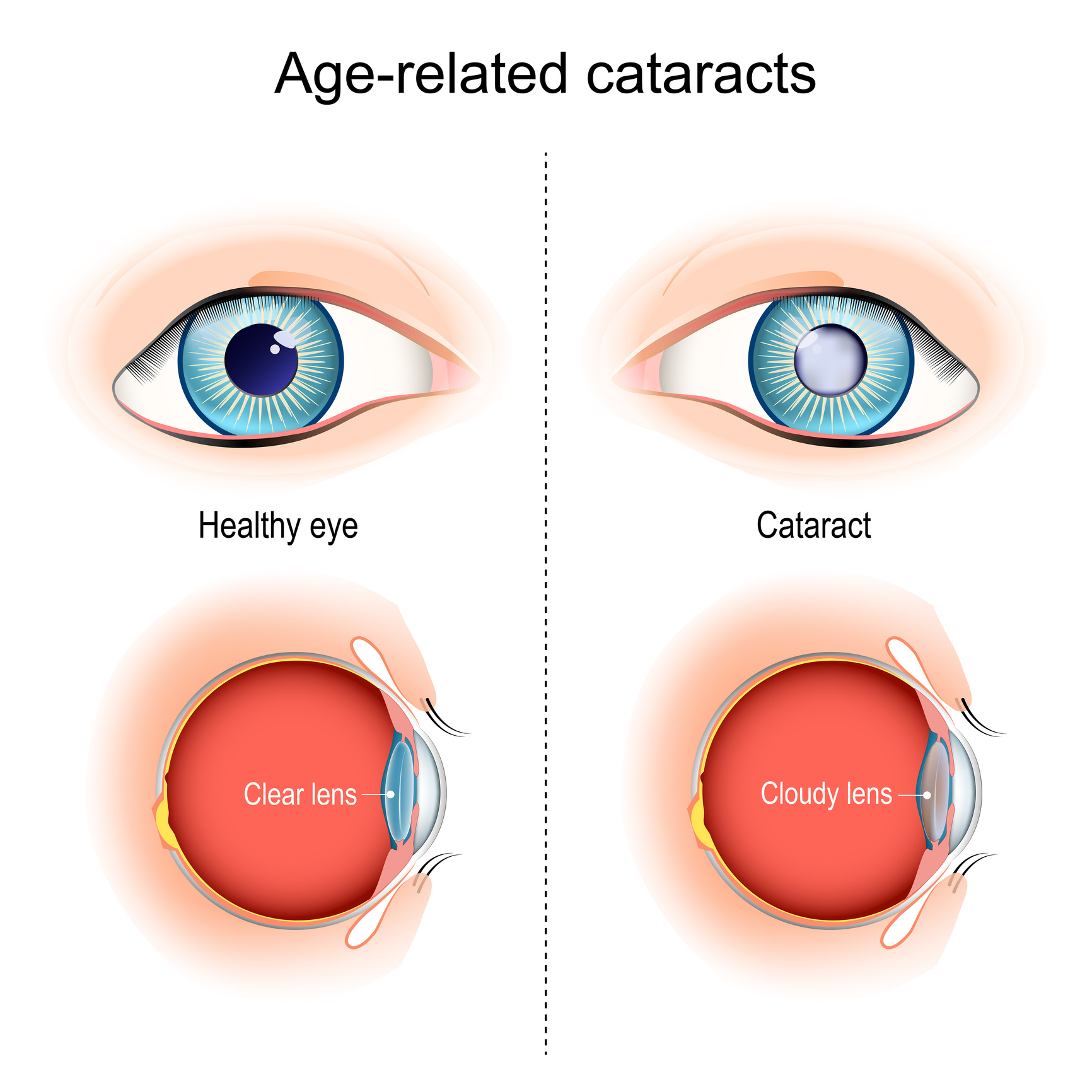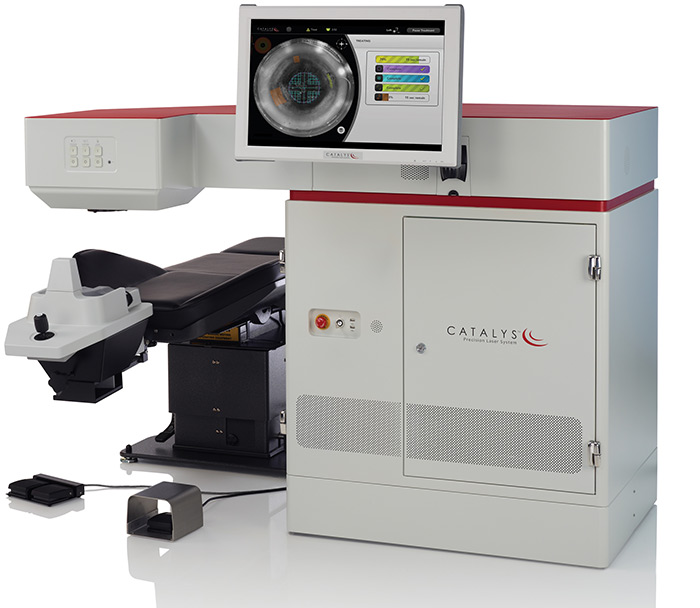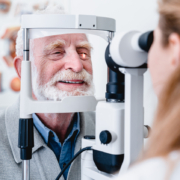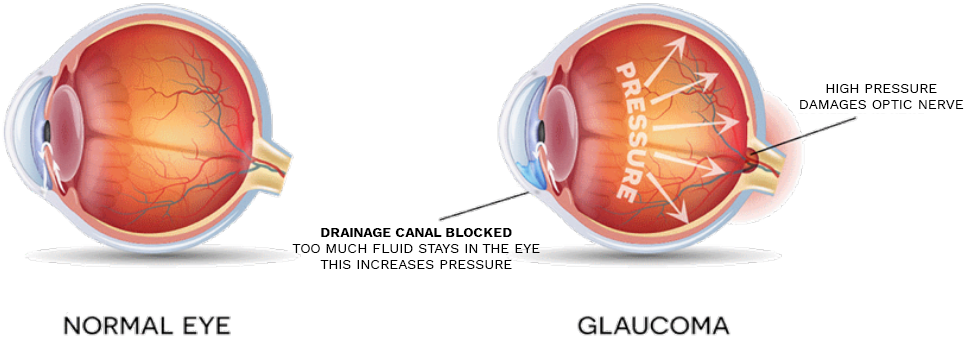Understanding the Initial Sign of Cataracts
 With age, sometimes, comes vision loss. Issues like blurred sight, cloudy vision, and light sensitivity can interfere with your daily activities and significantly affect your quality of life. These are often the first signs of cataracts, a common eye condition that affects millions of people around the world.
With age, sometimes, comes vision loss. Issues like blurred sight, cloudy vision, and light sensitivity can interfere with your daily activities and significantly affect your quality of life. These are often the first signs of cataracts, a common eye condition that affects millions of people around the world.
A cataract develops when the eye’s natural lens, a clear structure that helps to focus images on the retina, becomes clouded. It is like looking through fog or a frosted-up window. This cloudy area is caused by a clump of protein cells that have broken down and gathered in one place on the lens – blocking light and clouding the eye’s lens. The clouded lens distorts the light before it reaches the retina, leading to noticeable vision problems such as cloudy or blurry vision.
While cataracts are frequently associated with aging, they can also occur due to other risk factors like eye injuries, ultraviolet radiation, smoking, or specific medical conditions like diabetes. Recognizing the early signs and symptoms of cataracts can lead to medical intervention, which is to effectively manage the condition and maintain clear vision.
Knowing the Early Signs and Symptoms of Cataracts
Identifying the early warning signs of cataracts can help you seek timely medical help and prevent further deterioration of your vision. So, what’s the first sign of cataracts?
The most prevalent initial symptom reported by people developing cataracts is blurry vision. Imagine looking at the world through a foggy window – that’s how many describe the symptoms of cataracts. The blurring arises when the light entering the eye gets scattered by the clouded lens before it reaches the retina, which causes the image to blur. This symptom largely interferes with performing daily activities like reading, driving, or even seeing facial expressions.
Vision problems are another common early sign of cataracts. You might notice that your vision is not as clear or sharp as usual. While it might start minimal, the vision problems worsen as the cataract grows larger. For instance, you may struggle to see clearly in dim or very bright light or have difficulties with night vision.
A unique symptom to be aware of is what is known as ‘second sight.’ When nuclear cataracts first develop, they can cause a temporary improvement in your near vision. But this “second sight” is short-lived and will disappear as the cataract enlarges.
Additionally, the world may appear less colorful or more yellow to someone with cataracts, as this condition often brings vision changes to color perception. It’s like viewing the world through a pale yellow filter where colors seem faded or less vibrant than they are.
Early detection of these signs can drastically affect the outcome of your vision health. Regularly scheduling comprehensive eye exams with a trusted eye doctor can ensure that symptoms are caught early, and a proper course of action can be followed.
Understanding Types of Cataracts and Their Symptoms

Cataracts can vary in terms of where and how they develop in your eye. Let’s dive deeper into the most common types of cataracts and their specific symptoms.
A nuclear cataract forms in the center of the lens, also known as the nucleus. In the early stage of a nuclear cataract, you may notice a temporary improvement in your near sight due to the lens’ hardening and yellowing, known as ‘second sight.’ As the cataract advances, the lens turns more densely yellow and further clouds your lens, causing blurry vision and loss of clarity.
A cortical cataract begins as wedge-shaped, whitish streaks on the outer edge of the lens cortex. As it progresses, the streaks extend towards the center and interfere with light rays passing through the lens. The common symptoms of a cortical cataract are vision distortions or problems with light diffusion, leading to difficulties seeing in bright light or a noticeable loss of color intensity.
Posterior subcapsular cataracts form at the back of the lens, directly affecting the pathway of light toward the retina. Of all types, they tend to progress faster and can reach an advanced stage within a few months. The initial signs of a posterior subcapsular cataract include poor vision in brightly lit environments and difficulty reading under normal light conditions.
Lastly, congenital cataracts are cataracts that exist from birth or form during a child’s early stage. They can be caused by infections occurring during pregnancy or genetic factors. Most congenital cataracts don’t affect vision, but if they do, they need to be removed promptly to prevent vision development issues in children.
Whether they occur naturally in older adults or are triggered by specific health or environmental factors, early detection and treatment of cataracts are crucial.
Dealing With Cataracts: Diagnosis & Treatment at Visionary Eye Doctors

With an understanding of cataract types and their tell-tale signs, you may be wondering: how are cataracts diagnosed and treated? This is where the team of eye care professionals at Visionary Eye Doctors shines.
At Visionary Eye Doctors, we understand that regular eye exams are the most important thing in maintaining optimal eye health. They play a critical role in detecting the early presence of cataracts and facilitating immediate treatment when needed. During an eye exam tailored to your individual needs, we examine your eyes with high-end diagnostic tools to identify any signs of cataracts; allowing us to detect the disease in its early stages, even before the symptoms become noticeable to you.
If cataracts are detected, it’s important to know that they’re treatable – and the most common treatment option is cataract surgery. At Visionary Eye Doctors, we’re proud to offer high-quality cataract surgery in Washington, DC, and surrounding areas. The procedure involves replacing the clouded natural lens with an artificial one known as an Intraocular Lens (IOL). This helps to restore clear vision, allowing you to resume your normal routines with ease.
Our team of renowned surgeons, complemented by our highly trained cataract care specialists, gives each patient personalized attention before, during, and after surgery. We offer the most advanced surgical techniques available, which ensures optimal results for our patients. Our promise is simple: we aim to restore your clear vision and help you regain control of your life.
Why Choose Visionary Eye Doctors For Your Cataract Treatment?
At Visionary Eye Doctors, we firmly believe that quality eye health care, tailored to the individual needs of each patient, is a necessity. Through a blend of our profound expertise, advanced technologies, and a patient-centric approach, we lead the way in cataract care. Here’s why we stand out:
 Cutting-edge Technology:
Cutting-edge Technology:
Embracing the most recent advancements in optical care, we use the latest diagnostics and surgical techniques to manage and treat cataracts. We are at the forefront of applying revolutionary technologies like femtosecond lasers and premium intraocular lenses, constantly striving to enhance our patient’s vision clarity.
Unequaled Surgeon Expertise:
Our board-certified surgeons have their skills honed by performing over 50,000 cataract surgeries. With extensive knowledge of all current lens options, including Monofocal Lenses, Multifocal Lenses, and Intraocular Lenses, our surgeons are experts in delivering unmatched patient care before, during, and after surgery.
Demonstrable Outcomes:
We are committed to delivering exceptionally high success rates. Every patient is a testament to our ability to improve the full range of vision, minimizing, if not eliminating, their dependence on glasses.
Comprehensive Eye Care:
We recognize that our patients might be facing more than just cataracts. Whether it is astigmatism, glaucoma, diabetes, or a history of previous surgeries, our team’s experience and specialized training ensure that even complex conditions can be effectively managed.
At Visionary Eye Doctors, it’s more than just cataract treatment. We focus on complete eye health and are dedicated to enhancing your vision and quality of life.
We are here to assist you on your journey to a clear vision. If cataract symptoms are disrupting your life, it’s time to act. Contact Visionary Eye Doctors today to schedule a cataract consultation. Don’t wait for vision problems. With timely consultation and personalized treatment plans, the path to a clear, bright vision is closer than you think.




